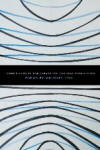There’s a Box in the Garage You Can Beat with a Stick
Michael Teig’s second poetry collection, There’s a Box in the Garage You Can Beat with a Stick, is a romping book, full of syntactic (and synaptic) leaps. Organized in three parts, two of which begin with meditations on the possibilities of boxes, these poems hint at a diverse poetic lineage, possibly including James Tate, the New York School poets, and Sombrero Fallout-era Richard Brautigan. Teig finds occasion for poetry in chickens and waltzes and monkeys and hats, and the speaker addresses readers in a casual, friendly mode. The diction of the poems ranges from officious to fanciful, sometimes in the same intake of breath, which is at times both confusing and exhilarating.
Michael Teig’s second poetry collection, There’s a Box in the Garage You Can Beat with a Stick, is a romping book, full of syntactic (and synaptic) leaps. Organized in three parts, two of which begin with meditations on the possibilities of boxes, these poems hint at a diverse poetic lineage, possibly including James Tate, the New York School poets, and Sombrero Fallout-era Richard Brautigan. Teig finds occasion for poetry in chickens and waltzes and monkeys and hats, and the speaker addresses readers in a casual, friendly mode. The diction of the poems ranges from officious to fanciful, sometimes in the same intake of breath, which is at times both confusing and exhilarating.
Many poems operate like Russian nesting dolls; whole, populated worlds exist beneath boxes and inside of people, and endlessness emerges repeatedly from the minute. Teig moves deftly back and forth between the sensical and the surreal. His work unmoors deictic words (like “this”) from their referents and toys with syntax, pairing words from different frames of mental reference as grammatically parallel, as he does in the book’s opening poem, “There is a day under a box.” Here, readers are told, “It’s very beautiful. There are delicatessens / and generations, and soon friends / and a little currency are sent in.”
Teig’s poems are filled with language play like this. At times, reading this book feels like a kind of low-level aphasia: established word order and parts of speech are consistently subverted.
These decisions make for poetry that is both disorienting and enjoyable, and somehow utterly right. The text lives up to the title’s invitation; the poems in There’s a Box in the Garage You Can Beat with a Stick are weird but likeable, and they make your brain feel all tingly when you read them. In fact, the operation of the brain is itself a minor thematic preoccupation here, as the book moves from the admission in “Optimal Brain Institute” that “In the pain-processing portion of my brain there is, at present, a / backlog” to a similar suggestion of brain dysfunction in the opening of “I Start Over By Simply Loving The Cat”:
When they say my short-term memory impairment
makes it difficult to say
if my working memory is working
I say, This is my retinue of donkeys and anthems.
As the suggestions of memory loss and its effects accumulate, the syntactic leaps take on heightened poignancy. However, the voice throughout is upbeat, and the moments of dissonance only heighten the book’s many occasions of loveliness in the form of offbeat epiphanic moments and surprising images. Take this moment in the midst of “Have I Forgotten Anything,” when, the speaker tells us,
One dog barks then
the spaces between them are barking
and then a hummingbird like
a tiny green zipper opens the air.
There’s A Box in the Garage You Can Beat with a Stick pairs charming, irreverent images with a sincere tone, making poems that at once are both accessible and elusive.





